Dive Tour
Shallow Reef Boat Dives
Dive Tour
Shallow Reef Boat Dives
Oahu is part of the most isolated chain of islands in the world! This means that as much as 30 percent of the marine life you’ll see on our reefs cannot be found anywhere else on earth! Aside from this, our reefs are known for their variety of colorful hard corals such as lobe, cauliflower, antler, brain and mushroom. Don’t miss the small stuff! While everyone can appreciate our massive turtles and other large pelagic animals, we stress the importance of the little guys. Our guides are known around the island for finding things other miss such as rare and colorful nudibranchs (sea slugs), frogfish, flourescent shrimp, camouflage octopus and more!
| What To Bring | Swimwear, Towels, Reef Safe Sunscreen |
|---|---|
| What's Included | Instructor, Equipment, Snacks & Drinks |
| Additional Notes | Please allow adequate travel time. Check GPS and maps. |
From the Pros
Great for all experience levels!
Dive sites are chosen each day based on weather and water conditions, requests for specific sites will be noted.
Click the flags to view the location.
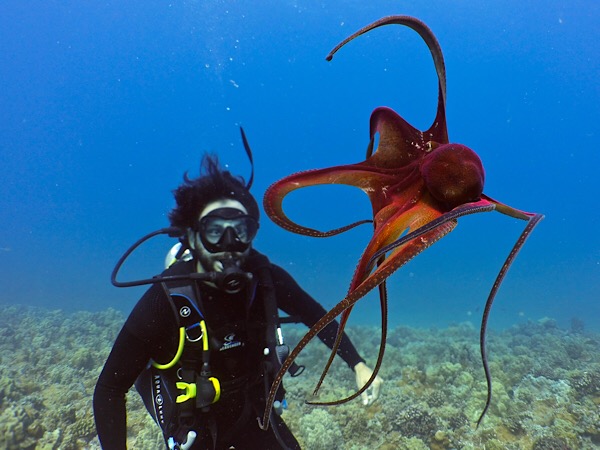
Ewa Reef
50 to 80Ft (15-25 m)
This reef dive on the Oahu’s south shore boasts beautiful lava formations and incredible overhangs. The max depth is about 80 feet. The dive depth varies and bottom time is usually about 25 minutes. There is an abundance of fish and a 6-foot turtle sometimes makes an appearance, lots of eels, often rays show up and the occasional white tip reef shark. Visibility here is often 100 feet of more.
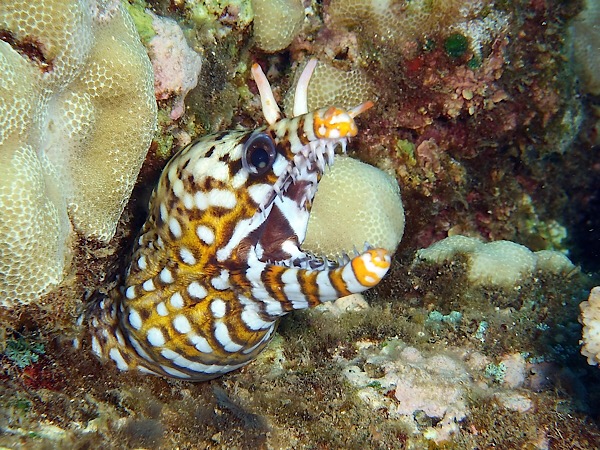
Horseshoe Reef
40 to 65 ft (12-20m)
Another south side double whammy! Horseshoe reef gets its name from its shape. Here you can find several species of eels, pincushion starfish, and antler coral. Swim 50ft (15m) to Kewalo pipe. Keep your eyes peeled for spotted eagle rays off in the distance, and follow along this drainage pipe covered in coral and little critters galore.

Kewalo Pipe
15-60ft (5-20m)
This dive site gets its name from an old storm drain pipe that runs straight out to sea from shore. Adjacent to Horseshoe Reef, it is a great example of South Oahu reef structure. Bright hard corals grow along the pipe itself, as well as the reef surrounding it. Keep an eye out for frogfish! They like to use the corals on the pipe to camouflage themselves. If your air lasts, the reef at the end of the pipe is pristine! Look for large white mouth morey eels and octopus!
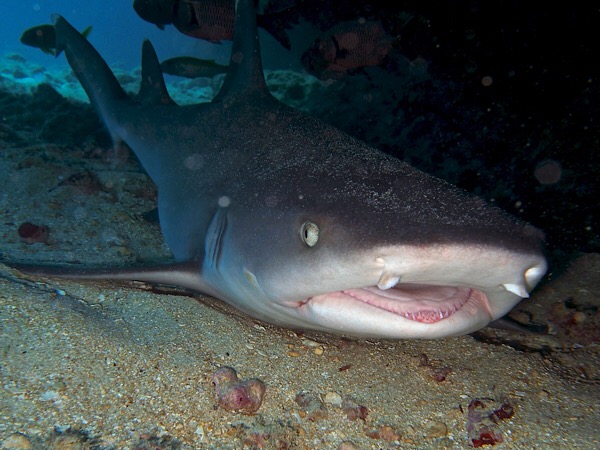
Nautilus
30 to 40ft (9-12m)
Nautilus Reef is a combination of two shallow reefs set upon old lava rock beds. It was named after the glass bottom boat Nautilus that toured the area, but has since been relocated to Guam.
Lots of reef fish here including triggerfish, boxfish, goatfish, tangs. Also sightings of manta rays, stingrays, tiger sharks and grey reef sharks are possible at the outer edges of the reef. Monk seals have been seen here too.
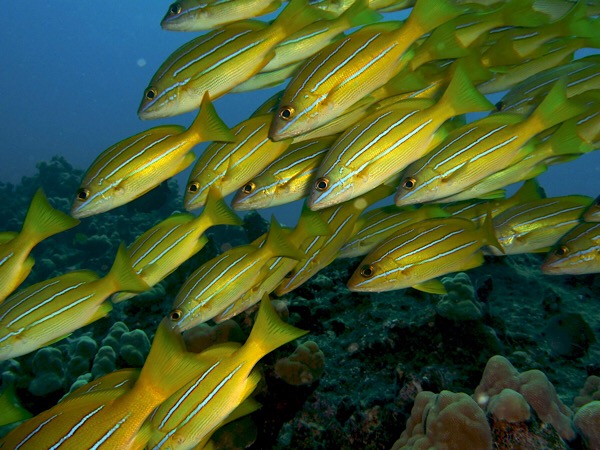
Rainbow Reef
23 - 65Ft (7-20m)
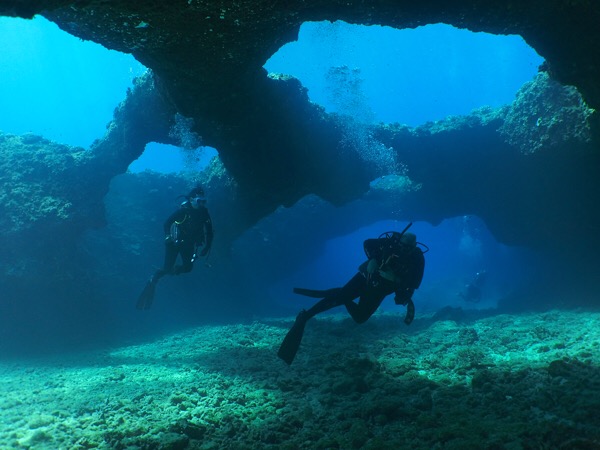
Stars
25 to 60 ft (8 -18m)
Another west side must dive! Known locally as Keau Corners, this is another great topography dive. Here you can drop through a vertical lava tube down to the bottom where you make your way to one of the most spacious caverns on the island. Everything from rare nudibranchs to the endangered Hawaiian Monk Seal can be found here.
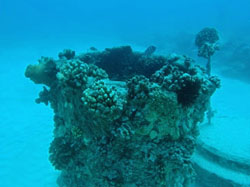
Super Mario World
35 to 45ft (10-14m)
Mario World is named because of the extensive pipe system that covers the area. This is a great spot to find Cowry shells and schools of huge puffer fish. Because of the depth it is great dive site for all of our divers, from students to certified divers just looking for a nice slow-paced reef dive.
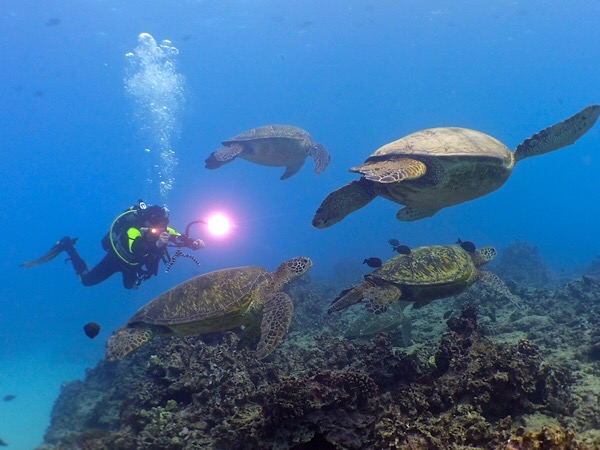
Turtle Canyons
15 to 30ft (5-10m)
Its in the name! As many as a dozen green sea turtles can been seen together here. Take a knee and watch one of the busiest turtle cleaning stations on the island. Several at a time gather to have their shells cleaned by tangs, wrasses and other fish. The turtles are used to divers, so getting a photo with one is usually easy. Don’t touch though, these guys are protected by law.
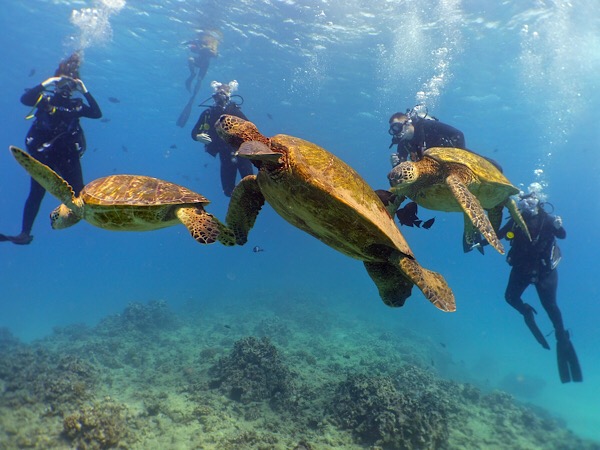
Turtle Town
30 to 40ft (9-12m)
Turtle Town offers a reef formed on lava that flowed from Haleakala centuries ago. The caverns and ledges in the lava are a perfect habitat for sponges, corals, octopus, fish, eels, and shrimp. The highlight of this reef is the number of Green Sea Turtles. The Green Sea Turtles are an endangered species and must not be touched or harassed. They are very curious animals and often allow snorkelers a good look from just a few feet away.
Tour Details
Oahu is part of the most isolated chain of islands in the world! This means that as much as 30 percent of the marine life you’ll see on our reefs cannot be found anywhere else on earth! Aside from this, our reefs are known for their variety of colorful hard corals such as lobe, cauliflower, antler, brain and mushroom. Don’t miss the small stuff! While everyone can appreciate our massive turtles and other large pelagic animals, we stress the importance of the little guys. Our guides are known around the island for finding things other miss such as rare and colorful nudibranchs (sea slugs), frogfish, flourescent shrimp, camouflage octopus and more!
| What To Bring | Swimwear, Towels, Reef Safe Sunscreen |
|---|---|
| What's Included | Instructor, Equipment, Snacks & Drinks |
| Additional Notes | Please allow adequate travel time. Check GPS and maps. |
From the Pros
Great for all experience levels!
Dive sites are chosen each day based on weather and water conditions, requests for specific sites will be noted.
Dive Locations
Click the flags to view the location.

Ewa Reef
50 to 80Ft (15-25 m)
This reef dive on the Oahu’s south shore boasts beautiful lava formations and incredible overhangs. The max depth is about 80 feet. The dive depth varies and bottom time is usually about 25 minutes. There is an abundance of fish and a 6-foot turtle sometimes makes an appearance, lots of eels, often rays show up and the occasional white tip reef shark. Visibility here is often 100 feet of more.

Horseshoe Reef
40 to 65 ft (12-20m)
Another south side double whammy! Horseshoe reef gets its name from its shape. Here you can find several species of eels, pincushion starfish, and antler coral. Swim 50ft (15m) to Kewalo pipe. Keep your eyes peeled for spotted eagle rays off in the distance, and follow along this drainage pipe covered in coral and little critters galore.

Kewalo Pipe
15-60ft (5-20m)
This dive site gets its name from an old storm drain pipe that runs straight out to sea from shore. Adjacent to Horseshoe Reef, it is a great example of South Oahu reef structure. Bright hard corals grow along the pipe itself, as well as the reef surrounding it. Keep an eye out for frogfish! They like to use the corals on the pipe to camouflage themselves. If your air lasts, the reef at the end of the pipe is pristine! Look for large white mouth morey eels and octopus!

Nautilus
30 to 40ft (9-12m)
Nautilus Reef is a combination of two shallow reefs set upon old lava rock beds. It was named after the glass bottom boat Nautilus that toured the area, but has since been relocated to Guam.
Lots of reef fish here including triggerfish, boxfish, goatfish, tangs. Also sightings of manta rays, stingrays, tiger sharks and grey reef sharks are possible at the outer edges of the reef. Monk seals have been seen here too.

Rainbow Reef
23 - 65Ft (7-20m)

Stars
25 to 60 ft (8 -18m)
Another west side must dive! Known locally as Keau Corners, this is another great topography dive. Here you can drop through a vertical lava tube down to the bottom where you make your way to one of the most spacious caverns on the island. Everything from rare nudibranchs to the endangered Hawaiian Monk Seal can be found here.

Super Mario World
35 to 45ft (10-14m)
Mario World is named because of the extensive pipe system that covers the area. This is a great spot to find Cowry shells and schools of huge puffer fish. Because of the depth it is great dive site for all of our divers, from students to certified divers just looking for a nice slow-paced reef dive.

Turtle Canyons
15 to 30ft (5-10m)
Its in the name! As many as a dozen green sea turtles can been seen together here. Take a knee and watch one of the busiest turtle cleaning stations on the island. Several at a time gather to have their shells cleaned by tangs, wrasses and other fish. The turtles are used to divers, so getting a photo with one is usually easy. Don’t touch though, these guys are protected by law.

Turtle Town
30 to 40ft (9-12m)
Turtle Town offers a reef formed on lava that flowed from Haleakala centuries ago. The caverns and ledges in the lava are a perfect habitat for sponges, corals, octopus, fish, eels, and shrimp. The highlight of this reef is the number of Green Sea Turtles. The Green Sea Turtles are an endangered species and must not be touched or harassed. They are very curious animals and often allow snorkelers a good look from just a few feet away.
Photo Gallery
Booking Calendar
You May Also Like
Night Dives
No matter how experienced you are, what your certification level is, our night dives are sure to excite.
Electric Beach Shallow Reef Dive
As much as 30 percent of the marine life you'll see on our reefs cannot be found anywhere else on earth!
















